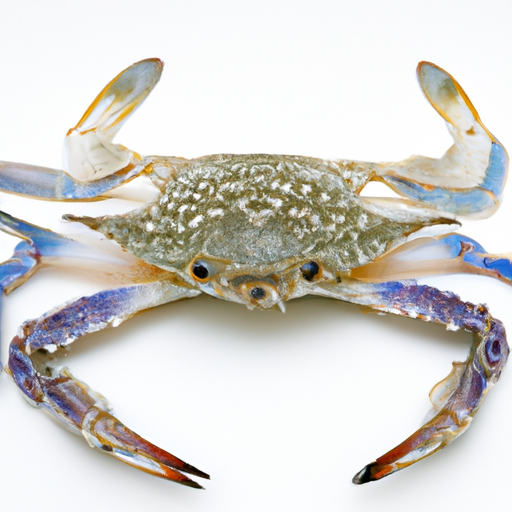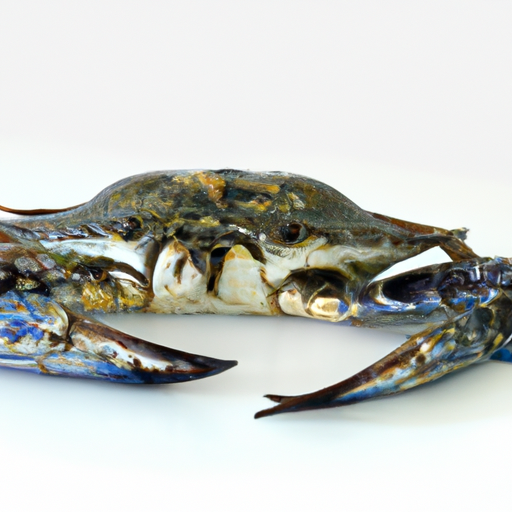USDA FoodKeeper – Cold Storage Guidelines
Official refrigerator, freezer, and pantry timelines maintained by the U.S. Department of Agriculture.
Visit USDA FoodKeeperKnown for their sweet, tender meat and vibrant blue shells, these crustaceans are a delicacy that seafood lovers cherish. However, with a short fridge shelf life of just two days, proper storage is crucial to avoid foodborne illnesses. Enjoying them fresh is key, so always keep an eye on their expiration!
30 most common foods with instant answers. Print it and stick it on your fridge—completely free! Want more? Upgrade to the complete guide with 70+ foods.
"According to USDA guidelines, cooked blue crab should be refrigerated within 2 hours of cooking and consumed within 3 to 4 days for optimal quality and safety."


Fridge
32-35°F (0-2°C)
Store in airtight container over ice
2 days
Off smell, slimy texture, discoloration
Crab cakes, salads, soups
Other crab varieties like Dungeness crab
Sure thing! Expiration dates on Blue Crab packaging indicate when it's no longer safe to eat due to potential food safety concerns. It's crucial to follow these dates to avoid any health risks. On the other hand, the "best quality" date refers to when the Blue Crab may start losing its flavor, texture, or overall appeal. For example, if you have Blue Crab that is past its expiration date but within its best quality date, it may still be safe to eat but might not taste as fresh or delicious as when it's at its peak. Personally, I tend to prioritize food safety, so if a Blue Crab is past its expiration date, I would lean towards not consuming it to avoid any risks. Remember, always use your best judgment when it comes to food safety and quality, and if in doubt, it's better to be safe than sorry!
To check if Blue Crab has gone bad, look for signs of discoloration or a slimy texture on the shell. Avoid crabs with a strong, pungent smell, as this indicates spoilage. Additionally, check for any mushy or discolored meat, as fresh crab meat should be firm and white.
Oh, blue crab - a delicious seafood delicacy that many of us love to indulge in! But hey, let's chat about something important - food safety. Blue crab, just like any other seafood, can carry some risks if not handled properly. One of the main concerns with blue crab is the potential for foodborne illnesses like Vibrio infections. These are usually caused by consuming undercooked or raw crab meat. Symptoms can include stomach cramps, diarrhea, nausea, and sometimes even more severe complications, especially for those with weakened immune systems. So, what can you do to enjoy blue crab safely? First off, always ensure you cook crab meat thoroughly until it reaches an internal temperature of 145°F (63°C). Also, be mindful of cross-contamination - don't let raw crab meat come into contact with other foods. And of course, always buy your blue crab from reputable sources to reduce the risk of contamination. Remember, a little caution goes a long way in ensuring a delicious and safe seafood experience!
Hey there! When it comes to storing blue crab, here are some handy tips and hacks to keep them fresh and delicious. 1. **Keep Them Cold**: Blue crabs are best stored in a cooler or the coldest part of your fridge. If you're storing them for more than a day, place a damp towel over them to keep them moist. 2. **Live Storage**: If you're storing live blue crabs, keep them in a well-ventilated container with a damp cloth over the top. Make sure to check on them regularly and remove any dead ones promptly. 3. **Freezing**: If you need to store blue crab for a longer period, consider freezing them. Clean and steam the crabs first, then place them in airtight containers or freezer bags. They can last for several months in the freezer. 4. **Use Ice Trays**: If you want to store crab meat in smaller portions, consider using ice cube trays. Fill them with crab meat, cover with water, and freeze. Pop out the cubes as needed for sauces or dishes. These tips have saved me many times when I wanted to enjoy fresh crab later on. Give them a try and let me know how it goes!
Hey there! Let's dive into the fascinating world of Blue Crabs! Did you know these feisty little creatures are not just tasty but also play a big role in East Coast culinary traditions? In places like Maryland, Blue Crabs are a big deal - they even have festivals celebrating them! Historically, Native American tribes used Blue Crabs for food and trade long before European settlers arrived. Fast forward to today, and these crabs are a staple in Southern cuisine, especially in dishes like crab cakes and gumbo. Here's a cool fact for you: Blue Crabs get their name from their blue claws and shells, which turn bright red when cooked. Pretty neat, right? So, next time you're cracking open a steamed Blue Crab, remember you're not just enjoying a delicious meal, but also a piece of cultural history. It's amazing how food can connect us to our heritage and bring communities together over a shared love for good eats!
Once opened, Blue Crab should be consumed within 1-2 days to ensure freshness and minimize the risk of foodborne illness. Properly store any leftovers in the refrigerator to maintain quality and safety.
Blue Crab should not be left at room temperature for more than 2 hours. Consuming Blue Crab that has been sitting out for longer may pose a risk of bacterial contamination. Always refrigerate Blue Crab promptly to maintain its quality and safety.
The type of container can impact Blue Crab's shelf life. Airtight containers are best for maintaining freshness. Avoid storing Blue Crab in metal containers, as the acidity of the crab can react with the metal, affecting both taste and safety.
It is not recommended to store Blue Crab next to other seafood to prevent cross-contamination. Seafood, including Blue Crab, can transfer odors and flavors to each other, impacting the taste and quality. Store Blue Crab separately in the refrigerator to maintain its distinct flavor.
Freezing Blue Crab can affect its texture when thawed. The meat may become slightly softer or more watery compared to fresh crab. To minimize texture changes, freeze Blue Crab in airtight containers or bags with minimal air exposure. Thaw crab in the refrigerator for best results.
The shelf life of Blue Crab can vary between different brands due to factors like processing methods and storage conditions. Always check the expiration date on the packaging and follow any specific storage instructions provided by the manufacturer to ensure the crab stays fresh for as long as possible.
Cooking Blue Crab can extend its shelf life by killing harmful bacteria and enzymes that cause spoilage. Properly cooked Blue Crab can last up to 3-4 days in the refrigerator. Ensure thorough cooking to a safe internal temperature of 145°F (63°C) to enjoy Blue Crab safely.
Blue Crab tends to have a shorter shelf life in warmer temperatures, such as in summer, due to increased bacterial growth. To prolong the shelf life of Blue Crab in hot weather, store it in the coldest part of the refrigerator and consume it within 1-2 days of purchase. In winter, with cooler temperatures, Blue Crab may stay fresh for slightly longer if properly refrigerated.
When transporting Blue Crab for a few hours, it's crucial to keep it chilled to prevent bacterial growth. Use a portable cooler with ice packs to maintain a temperature below 40°F (4°C). Pack Blue Crab securely to prevent leaks and avoid cross-contamination with other foods. Once you reach your destination, promptly refrigerate the crab to maintain its quality.
30 most common foods with instant answers. Print it and stick it on your fridge—completely free! Want more? Upgrade to the complete guide with 70+ foods.
Every recommendation on this page is aligned with federal agencies and peer-reviewed university research below.
Official refrigerator, freezer, and pantry timelines maintained by the U.S. Department of Agriculture.
Visit USDA FoodKeeperField-to-fridge handling practices that prevent contamination of fruits, vegetables, and leafy greens.
Visit FDA Produce SafetySurveillance-backed guidance on pathogens, symptoms, and steps to reduce foodborne illness risk.
Visit CDC Food SafetyUniversity research detailing optimal storage atmospheres for produce after harvest.
Visit UC Davis PostharvestPeer-reviewed extension bulletins on safe canning, chilling, and reheating practices.
Visit Penn State ExtensionNeed deeper reading? Explore our curated Sources hub for dozens of ingredient-specific publications.
Scan your food directly and get instant safety info using our AI-powered camera feature.
Ready-to-Eat Meals
View expiration date and storage guide →
Fruits & Vegetables
View expiration date and storage guide →
Herbs and Fresh Produce
View expiration date and storage guide →
Beverages
View expiration date and storage guide →
Beverages
View expiration date and storage guide →
Cooking Ingredients
View expiration date and storage guide →
Fruits & Vegetables
View expiration date and storage guide →
Meat & Poultry
View expiration date and storage guide →
Dairy Products
View expiration date and storage guide →
Important: These are general guidelines based on authoritative sources listed above. Always use your best judgment and when in doubt, throw it out. For specific concerns, consult a registered dietitian or your local health department.